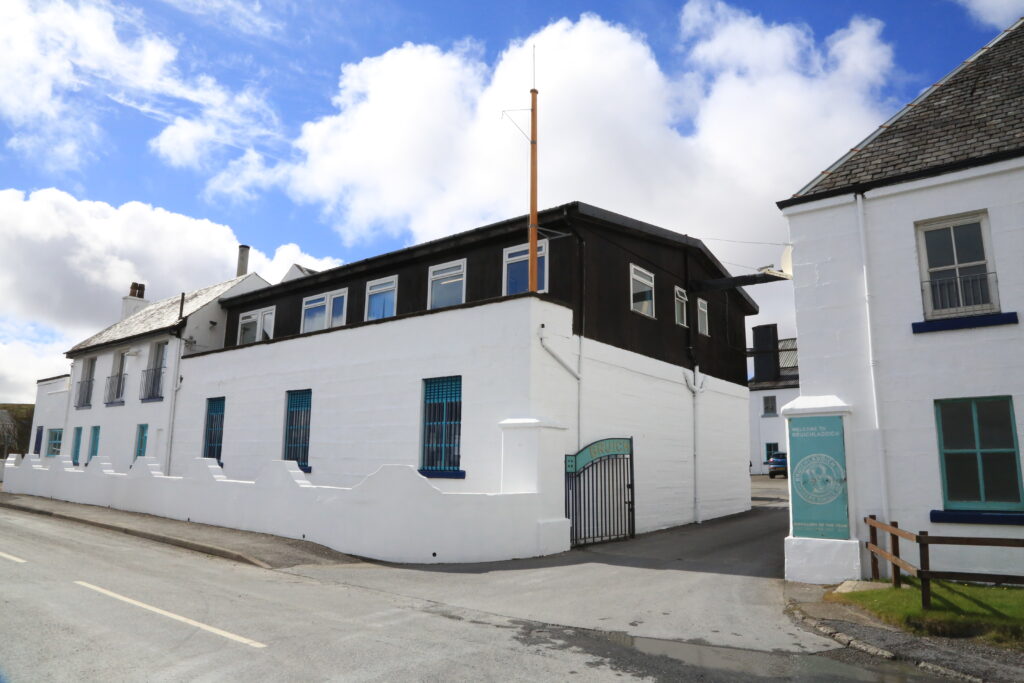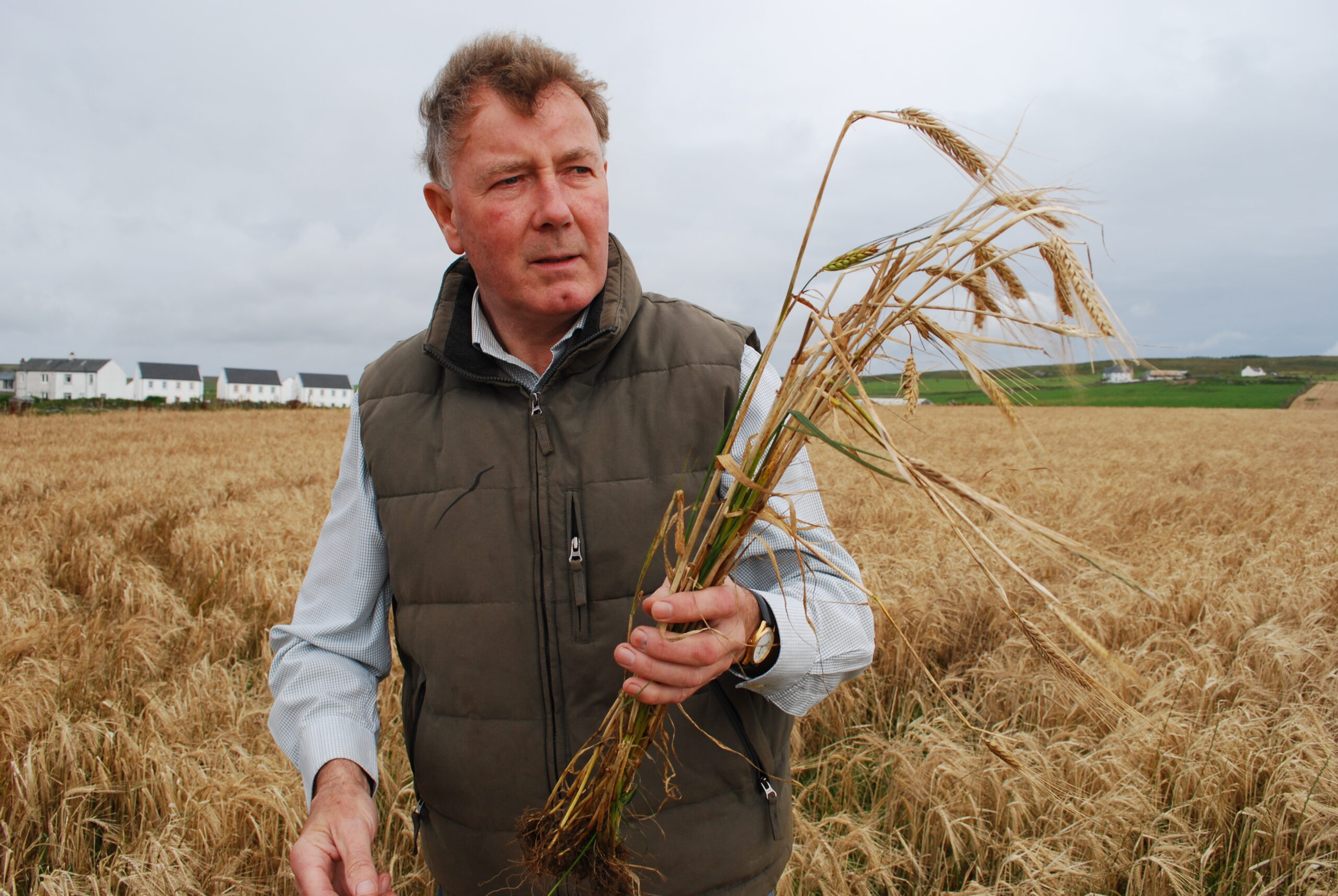Terroir is a common concept in wine, but until now, it has rarely been mentioned for spirits that are not brewed, much less for whiskey made from grains. For a long time, it was common knowledge that the factors that determine the flavor of whiskey were not the barley used to make it, nor the malt from which it was made, but the shape and size of the distillation vessel, the heating method, and the final aging process in barrels. It has long been the conventional wisdom that the factors are not the barley or malt used to make it. The distillery that broke the mold was the Brucrady distillery of Islay malt.
Brooklady was established in 1881 and was a relatively "young" distillery for Islay malt, and was once a minor player behind the fame of Bowmore, Laphroaig, Lagavulin, and Ardbeg, which are said to be synonymous with Islay. In fact, it has fallen into financial difficulties several times, changing owners several times and being forced to shut down each time. In the 1980s and 1990s, when Scotch was in the doldrums, it was barely produced at all. The company that set out to rebuild Brooklady was Marley McDavid, a bottler (independent bottler), and Jim McEwan, who was entrusted with reviving the distillery at that time. Marley McDavid is headed by Mark Rainier, who has been in the wine business for many years. Jim McEwan is the former head of Bowmore, and is known as "the legendary man of Islay.
The two men, who set out to revive Brooklady, shared a common thought: "It's strange that a Scotch distillery doesn't use Scottish barley. More than 70% of the barley used by scotch distilleries comes from foreign countries such as England, Ireland, Germany, and France. At the time, less than 30% of distilleries used Scottish barley. Of these, almost 100% of the barley used by Islay distilleries, which have fans all over the world and have supported today's whiskey and single malt booms, was foreign (mainly barley from Norfolk, England).
The slogan for the revival of Brooklady was to "use all barley from Scotland and Islay. Of course, this was to differentiate themselves from other Islay distilleries. In this context, Scottish barley was not so much of an issue. Scotland produces nearly 1.6 million tons of barley per year, and there was plenty to go around. Brooklady's maximum annual production capacity was about 2 million liters (LPA. 100% alcohol equivalent). The amount of barley malt needed for this is about 50,000 tons, which means that even the weak Brooklady can get a good deal depending on negotiations. The problem was that the use of barley from Islay was essential to pursue the terroir of the region.
Converted from pasture to barley field by persuading farmers
The island of Islay is the southernmost island of the Inner Hebrides, which stretches from north to south along the west coast of Scotland, and is about the size of Japan's Awaji Island in terms of area. It has a population of only 3,500. However, there are currently nine distilleries here, and it is revered as one of the "sacred places" by whisky fans around the world. More than 100,000 tourists visit the island each year, and more than 90% of them come to visit Islay's distilleries.
The island's largest industry is, of course, whiskey, but until the 1990s, when whiskey, especially Islay malt, was not as popular as it is today, the island's industry was mainly farming, and even then it was mainly cattle raising. When I first visited Islay 35 years ago in 1989, I saw far more sheep than people. In other words, there were almost no fields on Islay, and no farmers grew barley. For over 100 years, barley had not been grown on Islay. So Jim and others in Brooklady took the lead in persuading farmers to take up the challenge. They convinced the farmers to convert sheep grazing land into fields.
Of course, the farmers agreed to pay a premium for all the barley they harvested. The farmers were anxious about continuing to raise cattle because of the foot-and-mouth disease and mad cow disease that had swept across England, and gradually more and more farmers agreed to convert their land to barley cultivation. Currently, the number of farmers growing barley in Islay has increased to nearly 30, with more than 2,000 hectares of land under cultivation. Already, nearly 40% of the malt used by Brooklady is barley from Islay, and the remaining 60% is all from Scotland.
In the process, they have learned that the quality of the barley varies from farm to farm, even within the same farm, and that this affects the taste of the whiskey. Brooklady has been brewing for each farmer, but now they change the brewing for each field even for the same farmer. In addition, recently, attention is being paid not only to the terroir of different vineyards, but also to the differences in taste depending on the variety of barley, just as in the case of wine.
With the recent global craft whiskey boom, many craft distilleries have begun to work on the differences in the preparation of different varieties of barley. There are more than 10 varieties of barley alone, including Optic, Concerto, and Lauriette, which Scotch has recently recognized as superior varieties (barley breeding is constantly advancing, with 30-40 new varieties being created every year), in addition to former varieties, beer barley, and even ancient or heritage varieties. In addition, an increasing number of former varieties, beer barley, and even ancient or heritage varieties are being revived and cultivated by finding seeds from laboratories and other sources. One of Brooklady's standard products is Bear barley, an ancient variety that has been cultivated for about 5,000 years.
The world of whiskey is now entering an age in which people are paying more attention to the differences in flavor between different varieties of barley, the main ingredient, and the terroir of the land where the barley is grown, such as the soil and climate.



